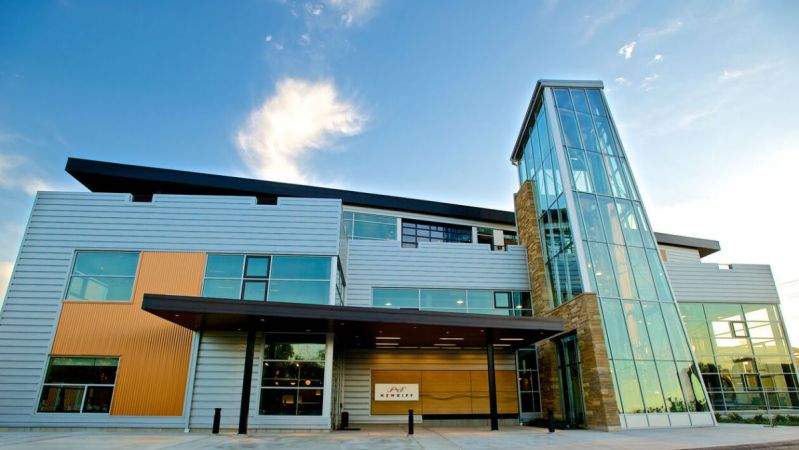
New Riff Distilling, the distillery just over the river from Cincinnati in Newport, Kentucky (and located next to the largest liquor store in the country, The Party Source), has announced that the brand-new Bottled in Bond Bourbon will be available for purchase starting this fall.
This is not New Riff’s first whiskey, but it will be the release distilled by the company. The previous whiskey project, an homage to Cincinnati’s distilling history named OKI (short for Ohio, Kentucky, Indiana), is a sourced bourbon that distillery ages and bottles.

New Riff Bourbon is made from a mash bill of non-GMO corn (65 percent), rye (30 percent), and malted barley (5 percent). The water used for the bourbon comes from 100 feet below the distillery in the Ohio River Alluvial Aquifer, a source that is naturally filtered and cool (it maintains a constant temperature of 58 degrees Fahrenheit), which eliminates the need for artificial (and energy-consuming) chilling processes. It is bottled in bond, which means the bourbon was made in a single distillation season by a single distillery, aged for four years (at least) in a bonded warehouse, and bottled at 50 percent ABV without anything added, such as colors or flavors.
One of the keys to New Riff’s approach to distilling is the fact that lead distiller, Brian Sprance, did not come originally from distillation, but instead emerged from the brewing sector (having worked formerly at Boston Brewing Company). The idea behind this, according to consulting master distiller Larry Ebersold, is that a brewer would intimately know how flavors are created during one of the first stages of whiskey-making: fermentation. Ebersold wasn’t wrong.

On the nose, the bourbon has butterscotch and oak notes, with some vanilla and rye spice playing second fiddle. On the palate, you’ll find sweet vanilla, cinnamon, clove, and dark berries. A long, spicy finish of mainly white pepper and clove finishes things out.
New Riff Bourbon will be available starting this fall and will retail for around $40.
For those heading to the Cincinnati area, it’s important to know, too, that New Riff is a founding partner of The B-Line, which promotes Northern Kentucky’s bourbon distilleries, local bars, and restaurants. In other words, if you’re in the area, The B-Line will show you where you can get your whiskey fix.



